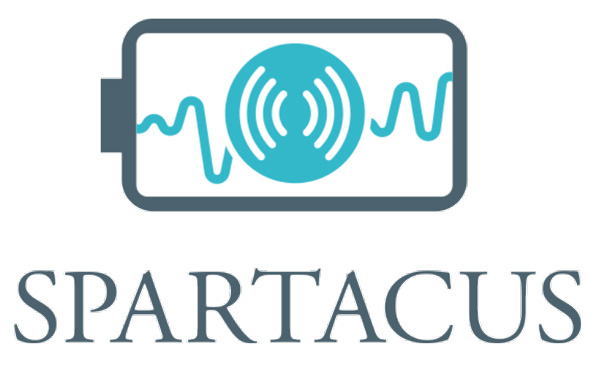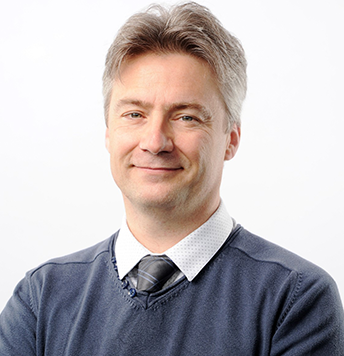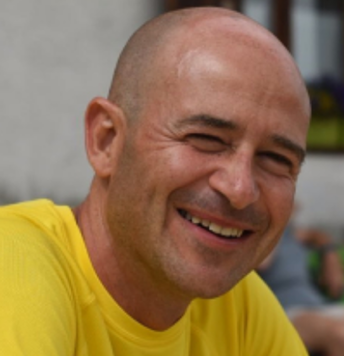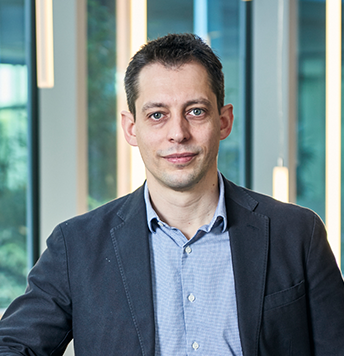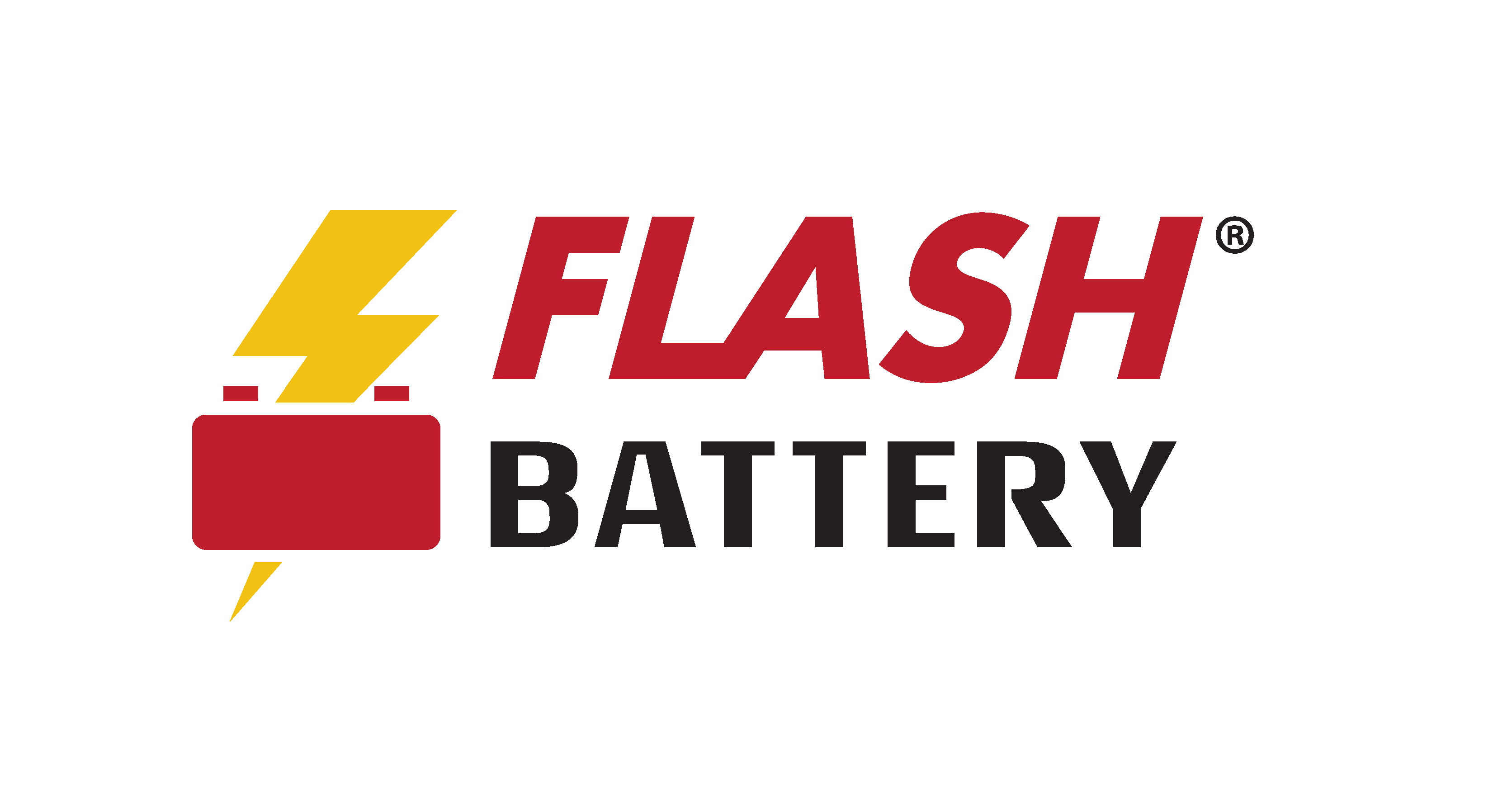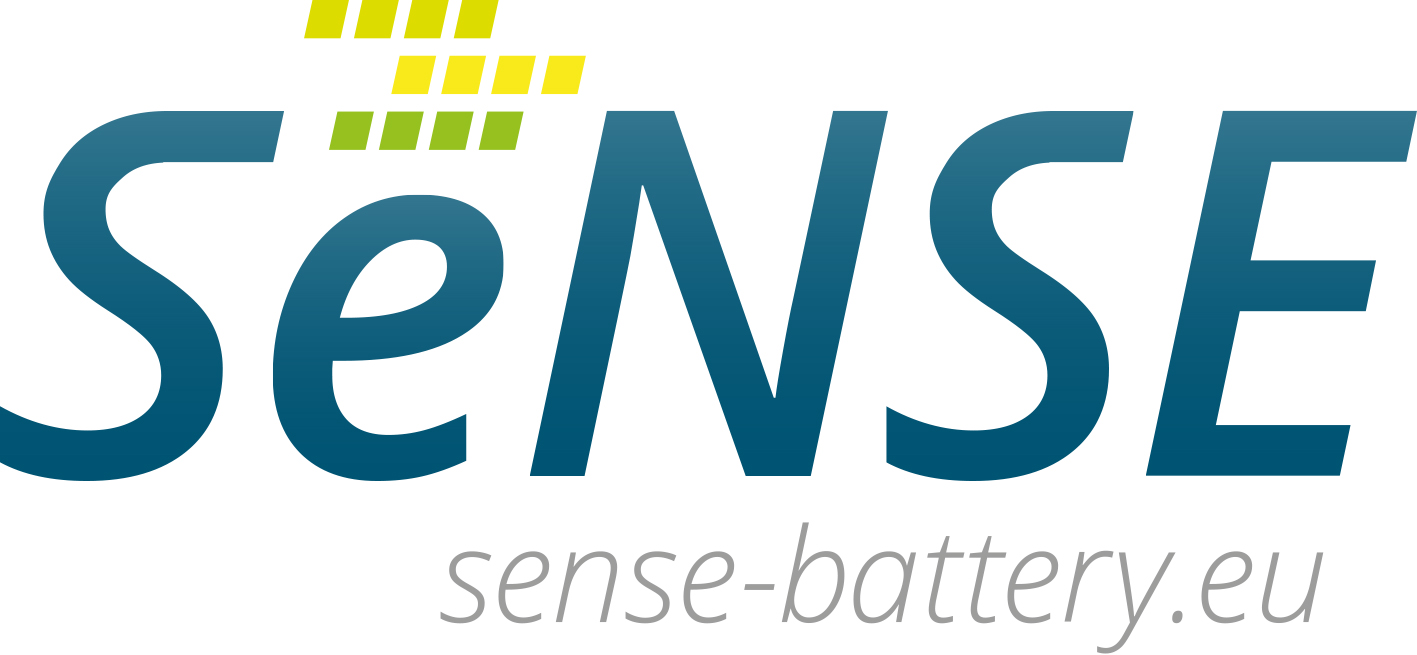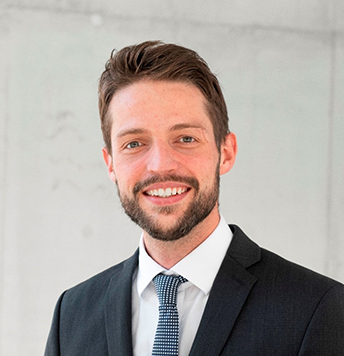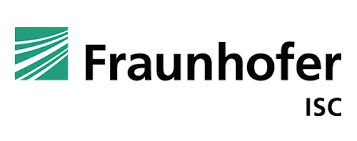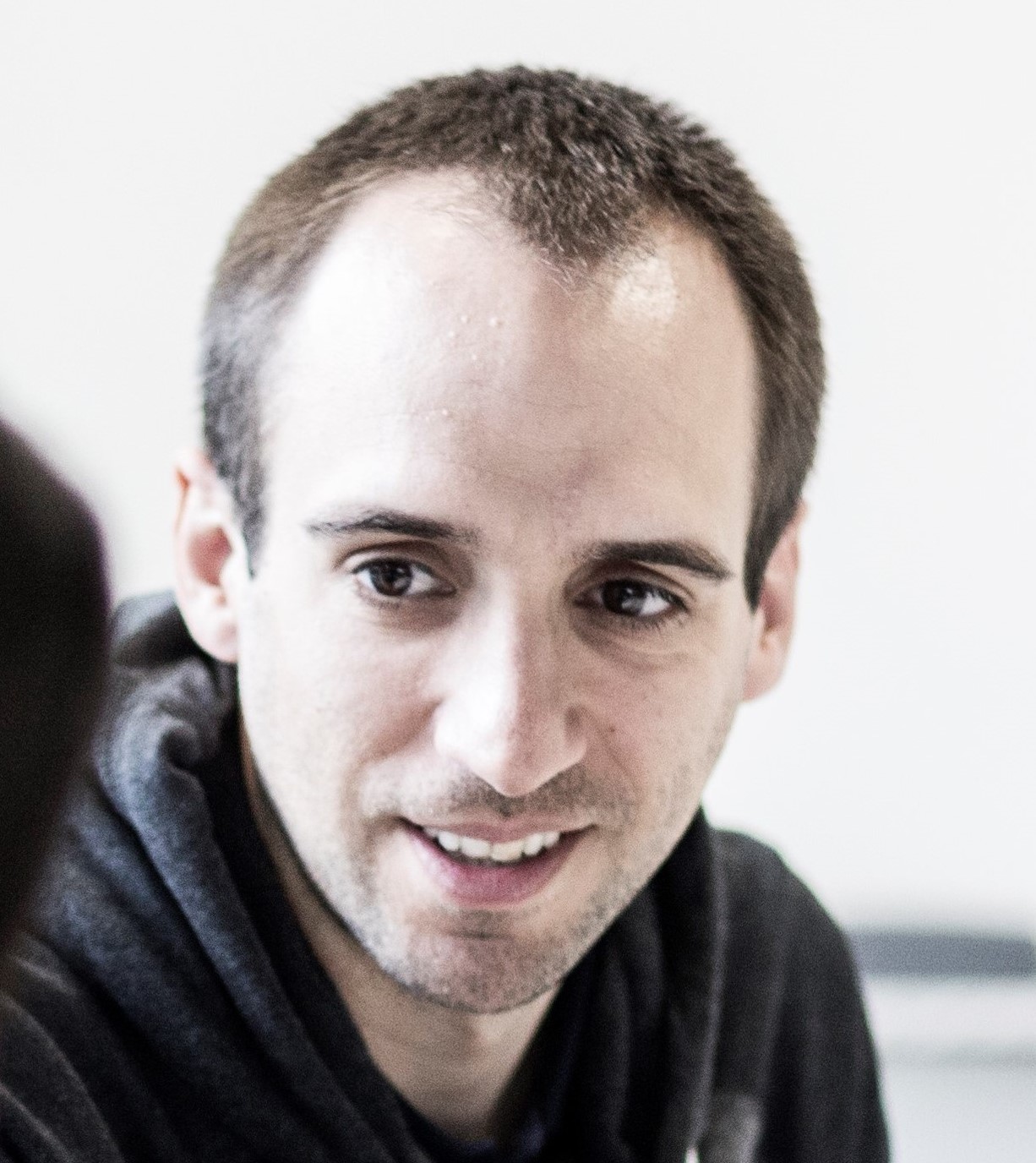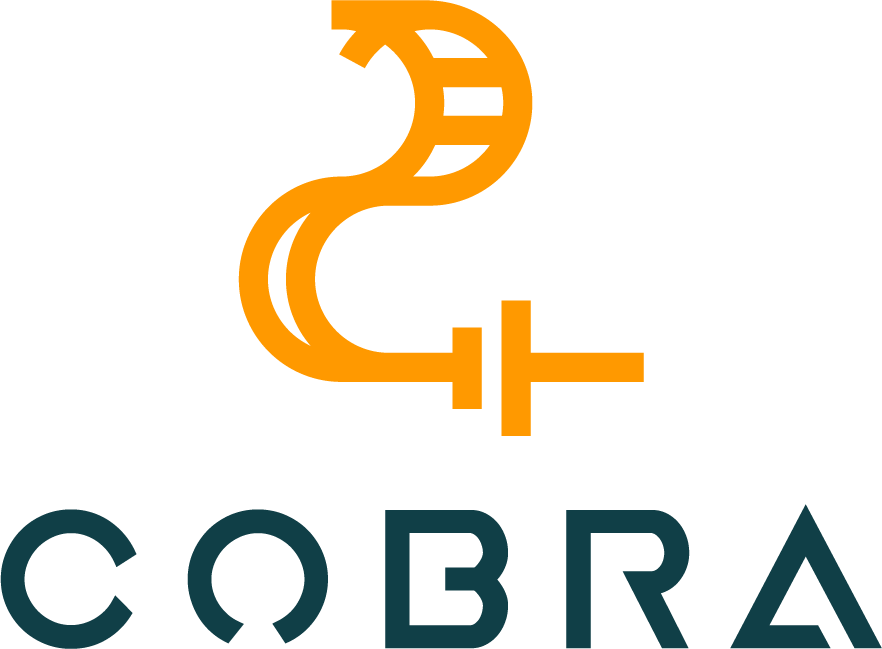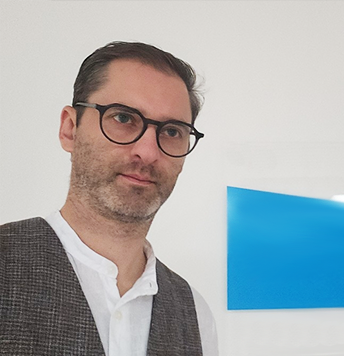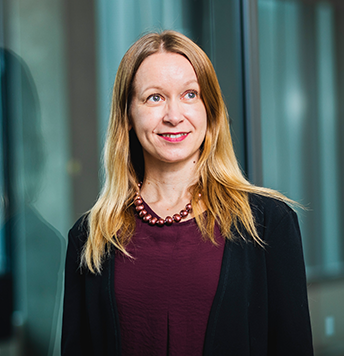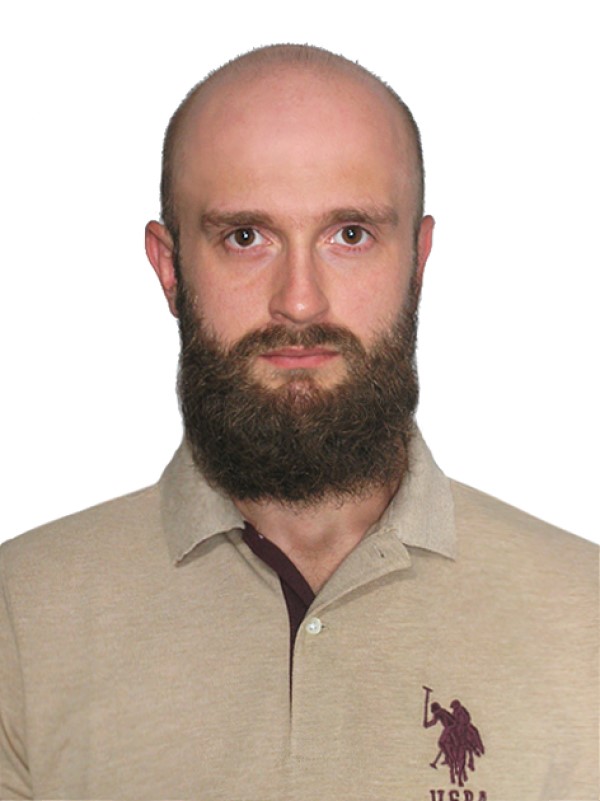Multisensor smart cell platform for operando and in situ monitoring, INSTABAT project overview
INSTABAT project [1] is a European project started in 2020 under the umbrella of the EU BATTERY 2030+ large-scale initiative [2]. According to the roadmap for smart cell [3], INSTABAT developing a proof of concept of smart sensing technology embedded in the cells to monitor internal key parameters such as temperature and heat flow, pressure, strain, lithium ion concentration, CO2 concentration, absolute impedance, potential and electrode polarisation. During the project, we develop a concept of “lab-on-cell” based on new embedded physical and virtual sensors to perform reliable and in operando monitoring of the key parameters. This monitoring is used to improve the performance and safety thanks to enhanced Battery Management Systems algorithms and real-time higher accuracy SOx determination. After an overview of INSTABAT project, the recent results of the project will be presented with a focus on the results on internal cell parameters measurement by physical sensors. These first results will validate the feasibility of the concept of “Lab on cell” developed all along the INSTABAT project.
The autor
Dr. Olivier Raccurt is a senior expert at CEA LITEN on nanomaterials for renewable energy and durability. He obtained a PhD in physics in 2001 and his accreditation to direct research (HDR) in 2015. After different research activity in the field of nanomaterials, photovoltaics and solar thermal, he’s now working on the durability and ageing mechanisms in the field of batteries for transport since June 2018. He has joined the Division of Energy and Hydrogen for Transportation at CEA LITEN in the laboratory of Post-mortem Analysis to work on battery durability and safety. His research activities are now centred on the advanced characterisation material analysis, degradation study (materials and battery systems) in real condition, development of sensor for in-situ operando measurement, accelerated test and lifetime analysis. He was involved in numbers of national and international project as coordinator and WP leader. He is the coordinator of the INSTABAT project (www.instabat.eu) and he was contribute to the sensing part of Battery2030+ roadmap (www.battery2030.eu). He is the author or co-author of more than 60 publications, 100 international conferences communications and main inventor or co-inventor of 29 patents.
Quality sensing for dielectric fluids
In several applications the insulating properties of dielectric fluids is crucial for the efficiency and safe operation of the systems. The measure of conductivity is sometimes not sufficient for a predictive monitoring of the fluid performance, as in the case of immersion cooling for batteries. A specific sensor for the evaluation of the dielectric strength of the fluid is presented.
The autor
Marco Pizzi, Research Director, Eltek Group. http://www.eltekgroup.it/
As Research Director and member of the Steering Committee of the Eltek Group I manage the strategic development of the company by the definition of the research topics and objectives. I lead a multidisciplinary team including physicists, engineers and biologists involved in several R&D projects in collaboration with other companies and universities.
Main fields: automotive (novel materials, sensors, actuators and thermal management systems), biomedical (development of Devices and Methods for Regenerative Medicine and systems and Microsystems for In vitro Diagnostics), appliance (novel sensors and actuators).
Advanced BMS for industrial applications
Safety and lifecycle of lithium batteries are the main concerns when dealing with the electrification of industrial vehicles and machines. On the other side, for cells and battery manufacturers it is hard to guarantee specific long-term lifecycle performance under real life usage conditions, because of the variability of operating conditions and their impact, not fully modelled yet, on battery degradation. The implementation of advanced sensing techniques, like electric impedance spectroscopy, are promising to give more detailed information about the internal status of a cell, but the tradeoff between hardware cost and complexity, computational resources and real benefits to the users is still an open point. Combination with server-side data analysis may be a key factor, especially when applied to new generation chemistries.
The autor
Alan Pastorelli made his Master degree in Electronic Engineering from University of Parma (Italy). In 2012, he became co-founder of the startup Kaitek srl (renamed Flash Battery srl in 2020). He developed several work within the company such as Hardware and firmware developing, reaching the CTO position.
Competitive next-generation European lithium-ion battery technology
The EU-funded SeNSE project aims to create next-generation lithium-ion batteries with a silicon-graphite composite anode and a nickel-rich Nickel Manganese Cobalt (NMC) cathode to reach a volumetric energy density of 750 Wh/l. Cycling stability and fast charge capability are some key aspects considered for this endeavour, which will be tested by putting in place a custom-developed module unit with integrated smart BMS which enables faster data logging, a more flexible control system and higher accuracy. It will be able to communicate with the test bench and active cooling system, which, utilising integrated cell sensors, enables smart cooling functions. At the end of the project a competitive next generation lithium-ion battery technology from the materials to the module level will be ready for mass production.
The author
Allessandro Mariani – Manager in the Electrified Powertrain Engineering division of FPT Industrial, I am coordinate several teams which are dealing with production, innovation and funded projects for on-road vehicle and non-road application, giving the right support to achieve the targets.
Coordinate team members activities, tracking the work need to be on time with the project’s goals. Interface between Mechanical, BMS, testing and System side team.
Accademia & Industry working experience dealing with HV Energy storge system for outstanding Companies as GS Yuasa, JLR, Aston Martin, and IVECO Group.
Dealing with supply chain, responsible of projects planning, cost. Support Manufacturing engineer, Platform and quality department needs.
Smart Batteries: from sensor development and integration to the advanced ageing models
This talk is focused on recent results from EU funded SPARTACUS project. The development of various sensor technologies for the mechanical, geometrical, electrical and thermal monitoring is presented. Sensor technologies are either printed or attached towards flexible films and integrated on different sensor layers which are attached on both sides of the cell to build up multi-sensorized smart battery cells. Specified cycling conditions are used for provoking defined aging mechanisms, the recorded sensing data will be used for generating first aging models of the developed smart cells as an auxiliary alongside with the ‘classic’ Voltage-Current inputs.
The author
Johannes Ziegler studied plastic and rubber engineering at the University of Applied Science in Wuerzburg and graduated with a thesis on the material development of electrically conductive latex rubber. Since 2013, he is working at the Center Smart Materials (CeSMa) and performs research on different topics, for instance on the development and processing of dielectric sensors based on silicone rubber, including the mechanical characterization and evaluation of the generated data. He is currently leading the Work Package of Sensor Development within the European Project Spartacus that is dedicated to monitor the State-of-Health of batteries with sensor technologies.
Review of risk assessment for battery management based on centralised and distributed architectures
The main functionalities of a Battery Management System relay on three main areas. Firstly, it monitors the battery and keeps an accurate estimation of the status in terms of State of Charge, effective capacity and the power that can be delivered. Second, it protects the user from potential hazards that might be caused by the thermal instability of the electrolyte in Lithium-Ion Batteries (LIBs) and, consequently, a third function to protect the battery from damage caused by abuse conditions such as overcharge, over discharge or over temperature which, in turn represents a potential hazard to the user. To facilitate the trade-off between the BMS functionalities, new ways of detecting all sorts of potential risks caused by the battery are being developed thanks to the introduction of new sensors technologies combined to traditional battery monitoring.
In terms of Functional Safety and evaluating the root cause of fire on EV over last 10 years it is concluded that more than 50% of the fires happened in a condition in which the battery is disconnected, i.e., neither charging nor discharging. Therefore, are quantitative hazard risk analysis is required to properly define the level of safety for the BMS.
There are two BMS architectures under consideration in this work: centralized and distributed battery management. The first one is used on Light Electric Vehicles (LEV), normally considered with a lower safety level compared to automotive EV but, given that the risk severity is the same (death) a quantitative risk analysis is required to properly evaluate the safety level. On the other hand, distributed architecture is found on stationary energy storage cabinets, particularly for second-life battery applications. In this case, the relevance of the quantitative safety analysis relies on the high uncertainty of the second-life cell health (with unknown stress) and thus adding an additional risk to be evaluated.
This work presents a list of potential risks identified, including battery working beyond the Safe Operation Area (SoA) in terms of Temperature, Voltage and Current in relation to the actual battery conditions of state of charge, state of health and state of power. Both BMS architectures considering new emerging sensor technologies are analysed based on methods such as tree-decision schemes or risk map events to derive a quantitative evaluation of the different intrinsic identified risks.
The author
Antonio Mollfulleda received the B.A. degree in telematics, the M.S. degree in telecommunication engineering, and the Ph.D. degree in signal theory and communications from the Polytechnical University of Catalonia (UPC), Barcelona, Spain, in 1997, 2000, and 2011, respectively. He has dedicated more than 15 years in the fields of communications systems and computer arithmetic’s, from concept to end product implementation on semiconductor or FPGA. After working for various companies, such as CTTC and Gigle Semiconductor, in areas such as multiantenna wireless communication, ultrawideband systems, and power-line communications. He joined Starlab Barcelona, to perform research on microwave remote sensing techniques using the GNSS signals of opportunity. He has led several European Space Agency (ESA) and EU projects on technology development in earth observation. In 2018, he joined Neuroelectrics Barcelona SLU, as an Engineering Manager to work on sensors for brain monitoring and transcranial current stimulation. In 2019, he joined IDNEO Technologies, S.A.U, as technical manager leading product specific research and development in areas such as camera systems for autonomous driving and battery management systems.
His interest includes the research of novel sensors and smart algorithms based on deep-learning architectures.
Cell-integrated Sensing functionalities for smart battery systems with improved performance and safety
The objective of the SENSIBAT project is to develop a sensing technology for Li-ion batteries that measures in real-time the internal battery cell temperature, pressure (e.g. mechanical strain, gas evolution) conductivity and impedance (separately for the anode, cathode and electrolyte). The data and insights from these new sensing technologies are used for the development of improved state estimator functions based on an improved understanding of how, where and when degradation and failure mechanisms occur. These functions are included in the BMS.
The approach consists of five steps:
1) develop the sensor technology
2) integrate this sensor technology into 1Ah and 5Ah pouch battery cells
3) incorporate the cells in a module BMS,
4) use the data from the internal sensing technologies to develop robust and advanced state estimation functions. Several state (SOC/SOH/SOE/SOP) estimation algorithms will be improved, better forecasting algorithms and novel safety concepts (SOS) will be created,
5) carry out a cost-benefit analysis for the batteries with sensors as well as a recycling study of the cells.
Improved understanding about the nature and timing of unwanted internal battery processes enables faster and more accurate control of the individual cells in a battery system during operation.
More accurate control stretches the possibilities of fast charging and discharging, increases the usable battery capacity and therefore range in different weather conditions and gives a detailed usage history. It allows for better battery state forecasting, resulting in a longer lifetime and more economical use during its 1st and 2nd life. Sophisticated lifetime prediction models enable improved (preventive) maintenance schemes.
The autor
Mr. Inigo Gandiaga, Project Manager & Senior Researcher at Ikerlan (headshot attached), graduated in Physical Sciences from the University of the Basque Country. Iñigo Gandiaga joined IKERLAN in 2010 and he has actively participated and led different industrial projects in the last 10 years. His professional research background are energy storage and data analytics, more in detail Iñigo is focused on the field of analysis of the useful life and state of batteries for electric mobility and stationary applications with different storage technologies (Li-ion, post Li-ion, Supercaps and Lithium-ion Capacitors). As result of his research, he has participated in more than 15 publications in leading magazines.
Advanced sensors and algorithms from COBRA project
COBRA is about to release the next generation battery pack including a novel BMS that incorporates wireless communications within the battery system, new sensors and advanced algorithms. The communications link is based on optical signals immune to electromagnetic interferences. A set of smart sensors is located at cell level measuring temperature, swelling (strain gauge), voltage and impedance (EIS) as well as performing passive balancing. A pressure sensor is located at module level to detect venting episodes and at battery pack level there is a laser-based gas sensor to detect any gas formation within the pack. These novel developments generate data that is used by a set of advanced models (physics-based) that optimize the operation of the battery. An EIS-based algorithm computes the cell core temperature of the cobalt-free cells. A thermal state observer is in charge of estimating the temperature distribution of the cells and, in combination with it, a charge management control computes the optimal charging profile to minimize degradation effects such as lithium plating. Enhanced equivalent circuit models with physics informed parameters are running at BMS level to improve the accuracy of SoX estimation. The pressure and gas sensors are able to provide early alerts and prevent thermal runaway events. All these systems operate on a decentralized BMS that is able to operate in an EV and grid-connected in 2nd life, both in a battery pack as well as in single module configuration thanks to its modular and scalable nature. The pack itself is made of green and recycled materials (such as pre-treated wood and aluminum) resistant to fire while reducing weight and environmental impact of the battery system.
Battery Aging by Innovative Sensors
Life cycle/ durability of battery is important for mobile and stationary applications. Normal automotive, passenger cars or commercial vehicles have an average life span of 10-15 years. BEV solution is economically viable only if battery pack/s support full vehicle life cycle. Thanks to increasing research efforts in Li-ion cell technologies (NMC, LFP, LTO), Li-ion cells are available with 5000- 8000 cycles, considering, cells are operated under controlled operating environment. However, monitoring of aging of cell/ SOH prediction in complex pack configuration is still a big challenge. This challenge increases the risk of over usage of the cell, hazard and poor warrantee. Often, SOH algorithms are based on electrical parameters such as cell volt, temperatures and internal resistances. These parameters are not enough to predict aging accurately because cell aging majorly depends on electrochemical reactions besides usage and operating conditions.
To infer the electrochemical behaviour of cell and cell aging, researches are working on behaviour models (AI, DL/ML), digital twins based on behaviour models and smart sensing. Smart sensing combining with innovative sensors are interesting but difficult to implement in real time situation. Probing signal has been used in the past: optic, magnetic (mutual induction or self-induction), infrared and ultrasonic signals. However, only few of them could reach to productization. In this session, we will discuss Magnetic Field Probing sensor for aging, effectiveness and challenges in implementation for real product.
The autor
Dr. Neeta Khare boasts a twenty-year background in the field of battery and fuel cell development. Currently, she is Director ( battery and Fuel Cell) with Iveco Group. She started with her PhD for intelligent battery management where she combined artificial intelligence and state of charge and state of health algorithms in 2005. Migrated to USA and led a project, Unmmaned Surface Vehicle for US Navy and later joined EOS Energy Storage as Sr. Scientist to contribute in development of low cost Zn-Hybrid battery. She led an R&D team and worked cross functional role to interface R&D with Business Development. She moved to Switzerland in 2015 to join Senior Scientist and head of BMS group with BFH-CSEM Energy Storage Research Center (ESReC), where she led the Battery Management Group developing BMS algorithms, models, software and hardware. Past two positions, Vice President Technology, Leclanche, and Chief Innovation Officer, GCT, broaden her experiences to words business and productization. These roles extended her vision beyond development of the battery management system, and covered, product life cycle, supply chain, cell manufacturing to the Battery pack solution for Electric Vehicles specifically Public Transport. in addition, as SLT member in GCT, she enhanced the vision for product development and company strategy. In Iveco group she is leading battery and Fuel cell product strategy and development.
She claims numerous patent and international publications in this field of expertise.
MUBIL SMART AND SUSTAINABLE MOBILITY HUB
The goal of MUBIL is to consolidate Gipuzkoa and Basque Country as a relevant actor in the field of smart and sustainable mobility. In order to achieve this objective the MUBIL SMART AND SUSTAINABLE MOBILITY HUB is being deployed. MUBIL HUB brings together public and private efforts to reinforce the ecosystem in the field of sustainable mobility.
The autor
Ainhoa Saizar Lizeaga made her Master degree in Energy and Power Electronics at Mondragon University.
From August 2021 MUBIL Sustainable Mobility Technician. She has previously developed her professional career at Ikerlan, as a researcher in the field of energy storage, and previously at Xunzel, where she has been part of the technical department developing off-grid solar energy systems.
Future: Fast Forward – The PERTE VEC Project Driving Spain into the Electric Age
The Future: Fast Forward project, part of the PERTE VEC initiative, aims to revolutionize the automotive industry in Spain by promoting the development and production of sustainable electric and connected vehicles. By prioritizing sustainability throughout the entire value chain, Future: Fast Forward seeks to establish Spain as a European hub for electromobility, ensuring a bright future for the Spanish automotive sector. In this talk, we will discuss the objectives and impact of this ambitious project, highlighting the key initiatives and innovations driving Spain towards a cleaner, more sustainable, and electrified future
The autor
Victor Clua Uceda is an experienced industrial engineer with passion for the evolving automobile industry, with more than 14 years of experience in the development and launch of new vehicles for SEAT & CUPRA. Currently leading a Workstream of partners within the project Future: Fast Forward (where CIDETEC is also a relevant player).
The Future: Fast Forward, made up of more than 50 companies, is born as the largest business group in the history of the Spanish automotive industry.
Enhancing Battery Sensor Data with Semantic Mappings
Sensor data is an important tool to monitor battery behavior and identify potential issues. However, it can be heterogeneous in nature and face challenges when integrating with other data sources, models, or software tools. In this talk, we propose supplementing battery sensor data with semantic mappings for linked data to extract greater value from the data and improve interoperability and reuse. Semantic mappings allow us to represent battery data in a machine-readable format that can be easily integrated with other data sources. This approach enables us to create a comprehensive model of battery behavior, which can be used to improve battery performance. We will discuss the benefits and challenges of this approach and present examples of its successful implementation in real-world scenarios.
The autor
Dr. Simon Clark is a Senior Research Scientist at SINTEF in Trondheim, Norway. He is an expert in physics-based modelling of electrochemical devices and semantic data science. Currently, Dr. Clark is the coordinator of the EU research project HYDRA, pursuing next-generation Li-ion batteries for electric vehicles. He is a lead developer of open-source battery digitalization resources like the Battery Modelling Toolbox (BattMo) and the Battery Interface Ontology (BattINFO). He earned his doctorate in computational electrochemistry at Ulm University in cooperation with the Helmholtz Institute Ulm (HIU) and the German Aerospace Center (DLR).
Corrosion monitoring and prediction of state of health of electrodes in battery systems
The solid electrolyte interface as battery interface formed on the top of electrodes inside batteries during service-life has been detected as enigma in whole battery research. Only few techniques and only in lab scale can detect changing chemical composition of corrosion products in-situ during charging/discharging processes and in-operando in complex way.
There is an inquiry in battery industry sector, esp. automotive and energy storage to study and control mechanism of degradation using non-destructive technique based on continual monitoring of changing physical-chemical parameters of each cell in whole battery system during life-time. We have set-up experimental programme focusing on prediction of life-time of battery cell by monitoring solid-electrolyte interface during degradation of electrodes. The hyphenation of physically and chemically driven model (electrochemical techniques) with data driven models (artificial neural networks) was used for assessment of real state of health of batteries after different charging/discharging cycles
This work was carried out within the frame of the project KEGA 006TUKE-4-2021
The autor
Maroš Halama is Head of Slovak Battery Alliance East Office at University Science Park Technicom, Head of VIB Lab – Laboratory for Research and Innovations in Batteries. Advisor for Cleantech at Kosice Self-Government Region. Member of the Steel Advisory Group at RFCS, EC. National and Regional Coordinator Group in Batteries Europe, Task Force Safety. State representative at Clean Hydrogen Partnership. Vice-President of the Slovak Association for Surface Treatment (SSPÚ). Since 2015, he has been a member of the American Chemical Society, the commission of the technical division for Industrial & Engineering Chemistry. In 2016, he was awarded the “International Association of Advanced Materials Scientist Medal (IAAM Scientist Medal) 2016” by the International Association of Advanced Materials in the USA, Miami for his significant contribution to the field of “Advanced Materials Science and Technology”. Since 2015, head of the Corrosion Testing Laboratory at the Promatech Center – Research Center for Advanced Materials and Technologies at the Slovak Academy of Sciences. Member of the board of directors and broker at Promatech Center.
The HIDDEN project: Integration of sensors and self-healing functionalities in batteries
The HIDDEN project focuses on developing two self-healing methods to increase the lifetime of lithium metal batteries (LMBs). LMBs would provide high energy density, but still suffer from lifetime issues, mainly due to the dendrite growth and dead lithium formation. One of the self-healing methods in HIDDEN is a novel self-healing electrolyte, thermotropic ionic liquid crystal (TILC). The other self-healing method we are developing is a piezoelectric separator.
Both methods either directly require sensing, or benefit from adding sensors in or on the cell. The TILC method uses temperature to trigger the self-healing. Thus, a temperature sensor is needed in combination with the heating element. The TILC method also requires sensing to know when to trigger the self-healing, while the piezoelectric method works autonomously. Both self-healing methods also benefit of non-invasive sensing that can follow if the self-healing mechanisms work during battery operation.
This presentation gives first an overview of the self-healing methods in the HIDDEN project, and then focuses on the integration of sensors into the cell setup. Both the current status and future needs will be presented.
The autor
Dr. Marja Vilkman is a Principal Scientist at VTT. She has a MSc degree in chemical engineering and DSc degree in physics, both from Aalto University. Marja has worked with functional materials and their processing for 20 years, focusing recently on the energy storage applications. She develops materials and processing methods for sustainable next generation batteries, such as solid-state batteries and batteries that use more abundant or even bio-based materials. Marja is currently a coordinator of two EU projects, HIDDEN and SOLiD, which aim at producing Li-metal batteries with long lifetime and high energy density. She is also the research chair of the BEPA Working Group of Raw Materials and Recycling.
Advancing Sustainable and Smart European Batteries: Exploring Self-Healing and Sensing Functionalities
The demand for batteries in electric mobility, grid energy storage, and consumer electronics is projected to increase tenfold in the next decade. However, for sustainable and European batteries to be developed and utilized, certain improvements are necessary. These advancements include longer cycle life, effective detection and prevention of degradation, recyclability feasibility, and reduced cost. European batteries should prioritize safety, durability, and environmental friendliness by incorporating smart functionalities like sensor integration and self-healing capabilities. To achieve this, the next generation of batteries must integrate these functionalities into the Battery Management System (BMS), which will be responsible for triggering the required features. The PHOENIX project seeks to explore a range of possibilities in self-healing, sensing, and triggering. Sensors and self-healing properties will be prototyped and demonstrated in Generation 3b and 4a Li-Ion batteries as part of this initiative and future environmental impacts will be addressed.
The autor
Pavlo Ivanchenko is a Chemist with the strong background in both laboratory work (design, synthesis, and characterization of nanomaterials) and the project management (leading positions in Horizon Europe and local Belgian research projects). Since 2021 he is working in the battery research filed at the Free University of Brussels where he takes part in the management and coordination of Horizon Europe projects like Spartacus and Phoenix, both dedicated to the advanced techniques for the estimation and improvement of States-of-X of the battery cells.
Autonomous Polymer based Self-Healing Components for high performant Lithium Ion Batteries
Electrochemical reactions in batteries occurring during cycles of charge and discharge cause structural changes in materials leading to drastic reduction in battery performance. Next-generation electrode materials for lithium-ion batteries are expected to degrade on interaction with greater amounts of lithium and thus undergo more drastic structural changes. The EU-funded BAT4EVER project will focus on self-healing mechanisms of the micro-damage and loss of material generated during repetitive cycles of charge and discharge. The project’s work will involve extensive material characterisation methods, atomistic modelling of material behaviour and simulation of battery cells. Researchers will then move to the prototype stage, compiling sophisticated cell-processes for validation of the self-healing lithium-ion battery in cell phones through intensive testing.
The autor
Prof Dr Ir Maitane Berecibar obtained her PhD in Engineering of Sciences at the VUB in August 2017 titled “Development of an Accurate State of Health Estimation Technique for Lithium-Ion Batteries”. Her PhD was a collaboration between the Technology Research Centre Ikerlan, located in Spain, and the research center MOBI at the Vrije Universiteit Brussel. During her studies, she was a visiting researcher in different international universities, like the New Jersey Institute of Technology (US), and the Brno University of Technology (CZ) developing the following projects “Estimating Storage Requirements for Wind Power Plants” and “Quality of Service of Free Space Optical Links”. During her post-doctoral research, she has been responsible for project management, business development and innovation grant writing at the MOBI research center for projects regarding the energy management transition, mainly focused on projects commissioned by the European Commission in the framework of H2020. She was granted with a FWO senior post doctoral grant.
Since 2019, prof Berecibar is the Head of the Battery Innovation Center in the MOBI research group at VUB. She is now in charge of R&D innovation and strategy in the field of batteries. The expertise of the Battery Innovation Center includes emerging battery technologies (gen 3, gen4 and other), battery manufacturing, self-healing properties, sensor integration, modeling activities (electrochemical, thermal, electrical, lifetime), smart SoX estimations, cooling system development, management strategies (thermal and electrical), recycling, second life and safety. As head of this group she focuses on developing new consortia, management of promising innovative projects and supervising the quality of the R&D of her group.
She is an official member of the IEC standardization body, concretely in TC-69 and TC-21 related to the battery topic or charging infrastructure. She is scientific reviewer of several Conferences (EVS, VPPC, Batteries2030+ Conference) and Journals (Energies, Applied Energy, Journal of Power Sources). She has participated as jury member in several PhD thesis, both at VUB, and in other universities.
About ZELEROS
Zeleros is a European deep-tech company dedicated to the design, development, manufacturing, and supply of hyperloop vehicles for intercity transportation of passengers and goods. These vehicles operate at ground level, achieving unprecedented speeds while producing zero direct emissions. One of Zeleros’ main technological focuses is high-performance batteries. The company aims to enhance its capacity to design, test, and manufacture batteries by concentrating on the development of new technologies and implementing a high-quality Battery Management System (BMS).
The author
Daniel Fons Sánchez is, with over 5 years at Zeleros and the opportunity to grow with the company, now the Project Technical Leader in the ESSprogram. He is an electrical and mechatronic engineer with a solide ducation and extensive experience in team leadership. My focus is in the field of batteries, although he also has knowledge in electrical machines and power electronics. During his time at Zeleros, he has contributed to several innovative projects and has patents and publications in his field.

